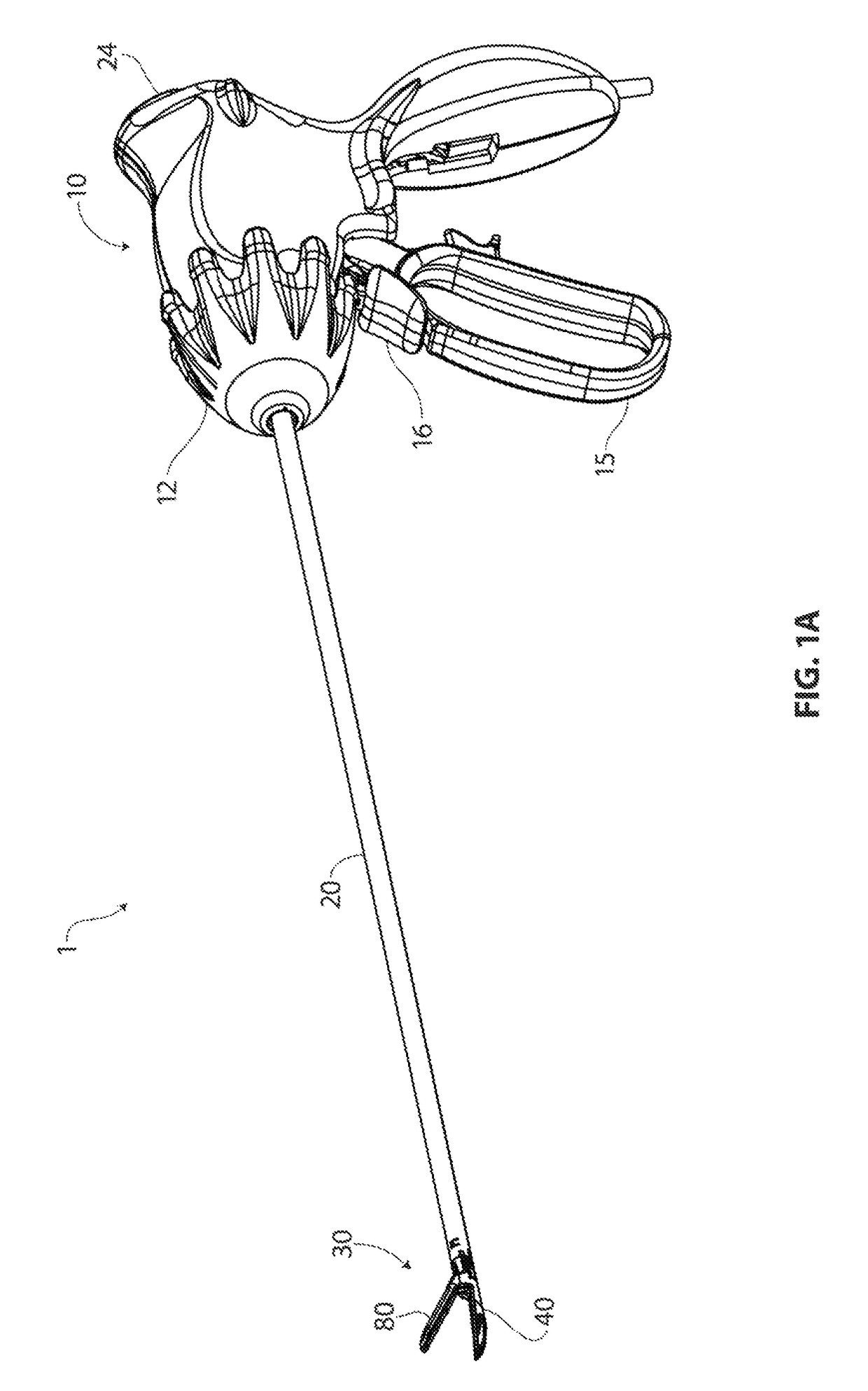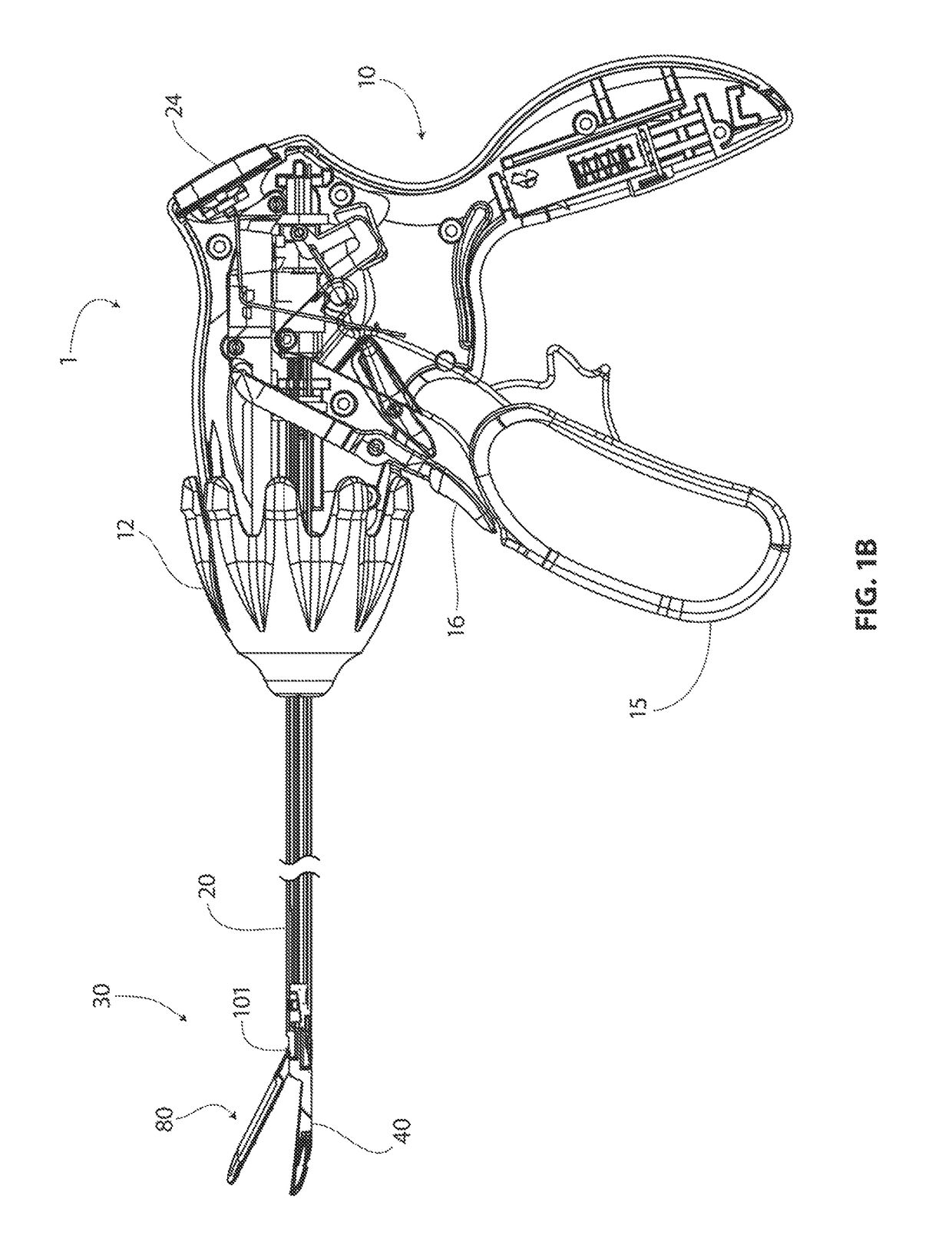Laparoscopic radiofrequency surgical device
a radiofrequency surgical and laparoscopic technology, applied in the field of electrosurgical systems and methods, can solve the problems of particularly challenging jaw alignment in the mutual field, and achieve the effect of preventing or correcting incipient lateral slippage and preventing lateral slippag
- Summary
- Abstract
- Description
- Claims
- Application Information
AI Technical Summary
Benefits of technology
Problems solved by technology
Method used
Image
Examples
Embodiment Construction
[0109]Embodiments of the technology described herein provide various improvements over available electrosurgical devices, such improvements permitting a physical downsizing of a device to a dimension that permits practical use of an electrosurgical device within the constraints of a laparoscopic surgical environment. One of these constraints to working laparoscopically relates to the 5 mm inner diameter opening provided by a commercially standard trocar. A device compatible with the 5 mm opening constraint needs to have an insertable configuration with a maximal diameter that is insertable therethrough. These technological improvements are generally directed toward creating a high degree of efficiency with regard to performance of the device per unit volume or cross sectional area. For example, a jaw set of a disclosed device, in spite of small physical dimension, is able to deliver an appropriate level of force to tissue being clamped by the jaws, and the structure and material of ...
PUM
 Login to View More
Login to View More Abstract
Description
Claims
Application Information
 Login to View More
Login to View More - R&D
- Intellectual Property
- Life Sciences
- Materials
- Tech Scout
- Unparalleled Data Quality
- Higher Quality Content
- 60% Fewer Hallucinations
Browse by: Latest US Patents, China's latest patents, Technical Efficacy Thesaurus, Application Domain, Technology Topic, Popular Technical Reports.
© 2025 PatSnap. All rights reserved.Legal|Privacy policy|Modern Slavery Act Transparency Statement|Sitemap|About US| Contact US: help@patsnap.com



